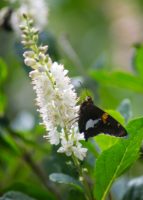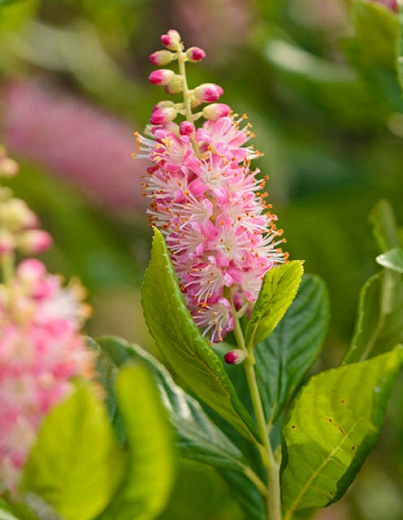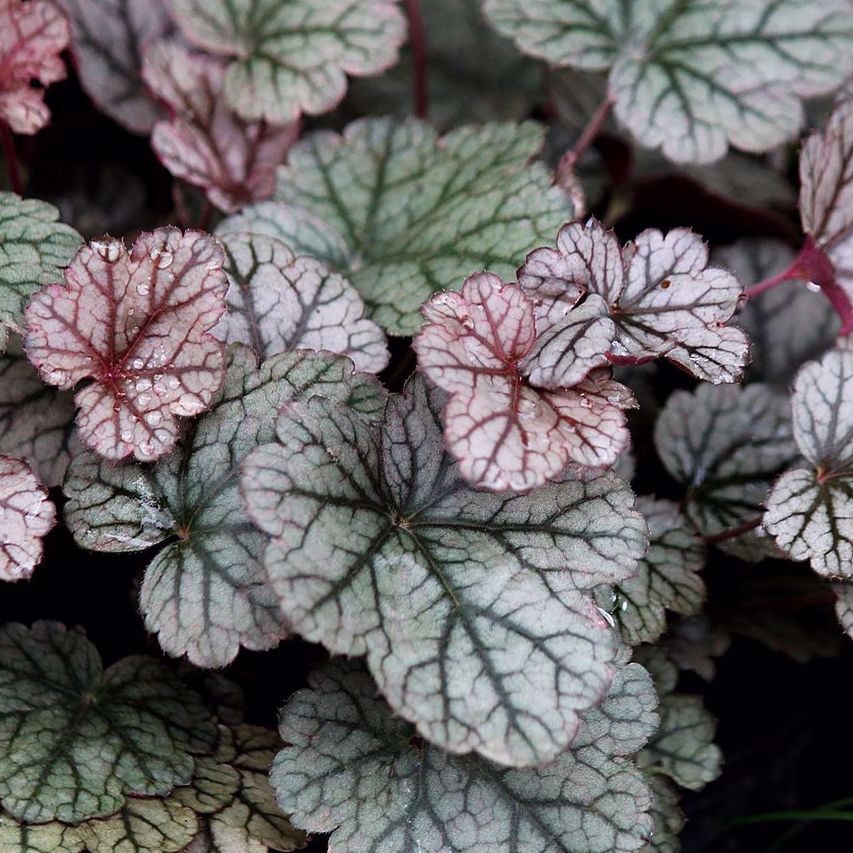
Written by Dr. John Frett
Clethra, commonly referred to as clethra, pepper bush or white alder, is a widely known genus of landscape plants that offers much greater diversity than most gardeners realize. There are three species native to the eastern United States, the most common being our native Summersweet Clethra (Clethra alnifolia). It is widely distributed in the coastal plain, often in wet sites. C. tomentosa is also native to the coastal plain but is limited to the Deep South and along the gulf coast. The last of our native species is C. acuminata. Native to the Appalachian Mountains, Mountain Clethra is larger than the other native species and often forms low canopies along the trails of the Blue Ridge Parkway. Many other clethra species are native to Mexico, Central America and Asia, but most are rarely, if ever, available in nurseries with the exception of C. barbenervis and C. fargesii. Both of these species are native to China and similar in many respects to C. acuminata.
The most notable landscape attribute of clethra is its flowers. All species have white, spike-like flower clusters ranging from 3” to more than 10” and bloom in mid to late summer. These flowers are a huge attraction for bees and butterflies making the shrubs a-buzz with activity in the summer. Flower variations are the most commonly selected characteristic used to produce the numerous cultivars. Many have longer inflorescences or pinkish colored flowers. While several cultivars claim to have pink flowers, none are reliably pink. The cooler the temperatures during flowering, the deeper the pink, but be forewarned, few look like the stunning images pictured in most nursery catalogs. In addition to length and color, several species have amazingly fragrant flowers resulting in the common name, summer-sweet clethra. C. alnifolia and C. tomentosa are by far the most sweetly fragrant species. In the landscape, C. tomentosa will flower a week or two later than C. alnifolia. Flowers give rise to brown fruits called capsules that remain on the plants through the winter and into the spring but have little landscape impact other than offering a broader surface to collect snow.
There is considerable variation in plant height among the species. C. alnifolia and C. tomentosa are the shortest plants growing from 4-6’ tall. There are many cultivars of C. alnifolia that were selected for shorter stature. Many will still reach 3-4’ height in time, although a few will remain 2-3’ at maturity. The other three species will grow to 10’ or more in the landscape. C. fargesii is listed as growing to 45’ in the Flora of China but will not come close to that height in the landscape. Most of the taller species will eventually reach 15-20’ if well grown. These plants often occur in at least partially shaded environments and will reach greater heights in part to full shade. The trade-off is always fewer flowers with less sun. The taller species also offer a very attractive bark and should be grown with 3-5 main stems that are limbed up to reveal the bark as plants mature. Once the main stems are established, if suckers develop, they should be removed to maintain best display. All have exfoliating bark that sheds to develop a mottled pattern of various shades. Our native C. acuminata displays different shades of gray, while the Asian species have more reddish brown to cinnamon hues. Plant along walkways to best appreciate the bark, particularly during winter.

All species mentioned here are deciduous with leaves typically turning golden yellow in fall. Foliage persists long enough to give a reliably good display from year to year. The Asian species may have some orange or red in addition to the yellow. Clethra is easily grown and pest free. Plants grow best in moist soils but C. alnifolia and C. tomentosa will tolerate heavy or wet soils as well. Plants flower best in full sun but tolerate light shade admirably. Plants grown in full shade will be taller with fewer flowers. Clethra, particularly C. alnifolia and C. tomentosa, tend to produce stems from the base of the plant. These two species sucker freely with plants forming slowly spreading clumps.
Regardless of the species, clethra offer a surprise burst of color to the summer landscape, a rarity with woody shrubs. Combined with their easy culture and nearly indestructible presence, they are a group of plants that do not disappoint.




